In the icy wilderness of the Arctic, the majestic polar bear reigns supreme. But beneath the beauty of its snowy domain lies a chilling question: Do polar bears hunt humans?

Polar bears, the largest land predators on Earth, are both awe-inspiring and fearsome. As they roam the vast, frozen expanses of the Arctic, these powerful creatures are known for their hunting prowess and adaptability.
But amid the myths and legends surrounding these majestic bears, one question often arises: Are humans on their menu?
This article delves into polar bears’ fascinating and sometimes terrifying world, exploring their hunting behaviors, human interactions, and what you need to know to stay safe in their icy territory.
Introduction
The mighty polar bear, Ursus maritimus, is a creature of awe and wonder. It roams the frozen landscapes of the Arctic with majestic grace, its sleek white fur blending seamlessly with the icy surroundings.
This apex predator commands respect and admiration from scientists and nature enthusiasts alike, but do polar bears hunt us? Will a polar bear attack?
Despite our fascination with these magnificent beasts, much about their enigmatic nature remains mysterious. Polar bears are highly intelligent, adaptable creatures that have evolved over millennia to survive in one of the harshest environments on Earth.
Their physical characteristics testify to their resilience – from their large paws equipped with sharp claws for navigating treacherous ice to their thick layer of fat that protects them from frigid temperatures. These adaptations allow them to thrive in a habitat where few other species can endure.
Yet, despite being studied extensively by scientists, there is still so much we do not know about polar bears. Their behavior and hunting patterns continue to confound us. This air of mystery surrounding these creatures makes them all the more fascinating.
We are left wondering: What lurks beneath those piercing blue eyes? How do they navigate vast expanses of ice with such precision? And most intriguingly, do polar bears ever view humans as potential prey?
The Question at Hand: Do Polar Bears Hunt Humans?

Popular culture often portrays these majestic beings as ruthless man-eaters lurking in wait for unsuspecting travelers or isolated researchers on Arctic expeditions.
However, it is essential to approach this question with caution and skepticism towards sensationalized narratives fueled by fear and ignorance.
While it cannot be denied that rare instances of polar bear attacks on humans have occurred throughout history, we must not let these isolated incidents overshadow the complex reality of human-bear interactions.
To understand the true nature of polar bears, we need to delve deeper into their evolutionary biology, ecological role, and historical coexistence with humans.
Only through a comprehensive examination can we separate fact from fiction and gain a nuanced understanding of the potential risks associated with encountering these magnificent creatures in their natural habitat.
So, join me on this journey as we explore the enigmatic world of polar bears and unravel the truth behind their interactions with humans.
Strap in for an adventure filled with scientific inquiry, cultural insights, and a quest for knowledge about one of Earth’s most fascinating apex predators. Let us embark on this exploration together, armed with curiosity and committed to uncovering the truth.
Understanding Polar Bears
Oh, the magnificent polar bear! These majestic creatures are the true rulers of the Arctic, masters of survival in an environment so harsh it would send shivers down the spine of even the most seasoned adventurer.
Their habitat is a frozen fortress dominated by vast ice-covered landscapes stretching as far as the eye can see. From frozen lakes to sprawling glaciers, these icy realms play a crucial role in shaping every aspect of a polar bear’s existence.
The significance of these ice-covered landscapes cannot be overstated. They provide a platform for hunting and serve as seasonal highways connecting different parts of their sprawling domain.
As winter releases its icy grip and gives way to spring, these formidable beasts embark on epic migrations across shifting ice floes in search of prey and mating opportunities. It is within this intricate network that their lives unfold – a dance with death and life on nature’s icy stage.
Physical characteristics and specialized adaptations for survival
Let us delve into the physical wonderland that makes polar bears extraordinary – perfectly adapted to thrive in an unforgiving Arctic world.
Their large bodies are wrapped in thick layers of fat, acting as natural insulation against bone-chilling temperatures that would send lesser creatures into hibernation or oblivion. Their paws are more than just mere appendages; they are built for conquest upon nature’s frosty terrain.
Equipped with non-retractable claws, these powerful limbs provide traction on slippery surfaces like ice and snow, allowing polar bears to move with unmatched agility and grace amidst treacherous conditions. But let us not forget their most distinctive feature – that lustrous coat!
Those shimmering white hairs serve two essential purposes: camouflage and thermal regulation. Blending seamlessly with the Arctic backdrop, polar bears become ghostly apparitions, stealthily stalking their prey.
Meanwhile, beneath that snowy exterior lies a dense layer of black skin, acting as a solar panel to absorb the scarce warmth of the sun’s feeble rays. Through these remarkable adaptations, polar bears have become true masters of survival in their frozen realm.
So, my dear readers, before we dive deeper into whether polar bears hunt us – let us first grasp the awe-inspiring nature of these wondrous creatures. Only then can we truly appreciate the intricate dance between predator and prey that unfolds upon nature’s icy stage?
Polar Bears as Predators

Polar bears, magnificent creatures of the Arctic, are apex predators with a well-defined hunting repertoire. While they are known for their seemingly insatiable appetite for seals, it is important to understand the natural prey preferences and hunting techniques that have evolved over millennia in these awe-inspiring animals.
In comparison, brown bears, grizzly bears, and black bears also exhibit predatory behaviors, with black bears and grizzly bears sometimes engaging in fatal attacks on humans.
Seals, particularly ringed and bearded seals, are polar bears’ primary source of sustenance. These blubbery marine mammals provide the essential fat content for survival in the frigid Arctic environment.
Seals: The Primary Source of Sustenance
The hunting strategies employed by polar bears to secure their main source of sustenance are nothing short of extraordinary. One such strategy involves stalking their prey on sea ice platforms.
With a remarkable combination of patience and stealth, polar bears patiently wait near breathing holes on the ice surface where seals surface to breathe.
These surprise encounters are crucial in this hunting technique as they allow polar bears to capitalize on the seal’s vulnerability during these brief moments out of water. Furthermore, polar bears have also been observed employing ambush tactics near breathing holes.
By lying silently beside these openings with only their nostrils exposed above the ice, they deceive unsuspecting seals into believing no danger lurks nearby. Once a seal ventures close enough, the polar bear lunges forward with lightning speed and executes a swift kill using its powerful jaws and razor-sharp claws.
Additionally, while seals form their primary food source, polar bears exhibit opportunistic behavior when other potential prey options present themselves in their icy domain. These alternatives may include scavenging carcasses washed ashore or preying on small land mammals like Arctic foxes or reindeer that stray onto sea ice.
Understanding polar bears as predators enlightens us about their preferred prey choices and the incredible hunting techniques they employ. This knowledge is crucial for dispelling misconceptions about their interactions with humans and sheds light on the inherent balance of nature in the Arctic ecosystem.
Human Encounters with Polar Bears
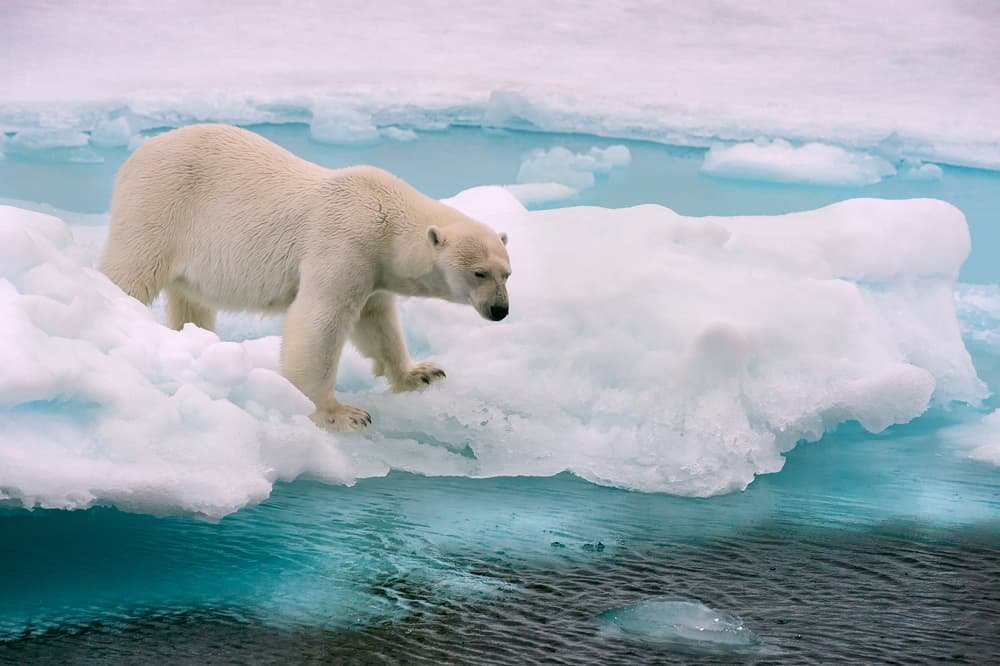
When understanding the relationship between humans and polar bears, we must turn to the wisdom of the Inuit, who have lived harmoniously alongside these majestic creatures for centuries.
The Inuit possess a deep-rooted traditional knowledge based on respect and coexistence with wildlife, including polar bears. Their understanding of the Arctic ecosystem and its delicate balance is unparalleled. In some regions, such as Norway, bear spray is currently illegal, and this lack of accessibility may lead to a higher reliance on lethal methods like firearms.
Inuit communities have long recognized that polar bears are not malicious predators seeking out humans as their next meal. Instead, they acknowledge that these magnificent beasts are driven by their innate instincts for survival. The involvement of male bears in predatory incidents is more common, while female bears often exhibit different behavior patterns in such situations.
Through generations of observation and experience, the Inuit have learned how to navigate the Arctic landscape while minimizing conflicts with polar bears. They understand that maintaining a respectful distance, avoiding sudden movements, and properly storing food sources are essential in preventing dangerous encounters. Historically, polar bear hunting has significantly impacted polar bear populations, with bans implemented by different countries to protect these animals.
Cultural respect for wildlife in Arctic communities
Unlike some outsiders who view wildlife as merely commodities or threats to be eliminated, Arctic communities hold a deep cultural respect for all creatures inhabiting their harsh yet awe-inspiring environment.
For them, polar bears symbolize strength and resilience and are integral to nature’s intricate tapestry. This reverence goes beyond mere survival; it is ingrained in every aspect of their daily lives.
In Arctic communities like those inhabited by the Inuit, hunting practices are deeply rooted in sustainability and ethical principles. They recognize that taking only what is necessary from nature ensures its long-term preservation.
This ethos extends to encounters with polar bears as well. Arctic communities prioritize peaceful coexistence rather than seeking confrontations or exploiting opportunities for sensationalized stories or trophy hunts like some misguided individuals do.
Historical accounts are replete with examples of mutual respect between humans and polar bears throughout centuries of shared existence in the Arctic region. Stories of polar bears ambling through Inuit camps without posing any threat or even assisting in hunting activities are not uncommon.
These accounts highlight that polar bears do not harbor innate aggression towards humans but instead respond to their surroundings and individuals’ actions. We must learn from the Inuit’s cultural respect for wildlife and harmonious cohabitation with these magnificent creatures.
By adopting a mindset rooted in understanding, we can dispel misconceptions and work towards promoting a peaceful coexistence between humans and polar bears.
It is time to challenge the sensationalized narratives that paint these incredible animals as ruthless hunters stalking human prey, for such narratives only perpetuate fear and hinder efforts toward conservation.
Rare Instances of Polar Bear Attacks on Humans
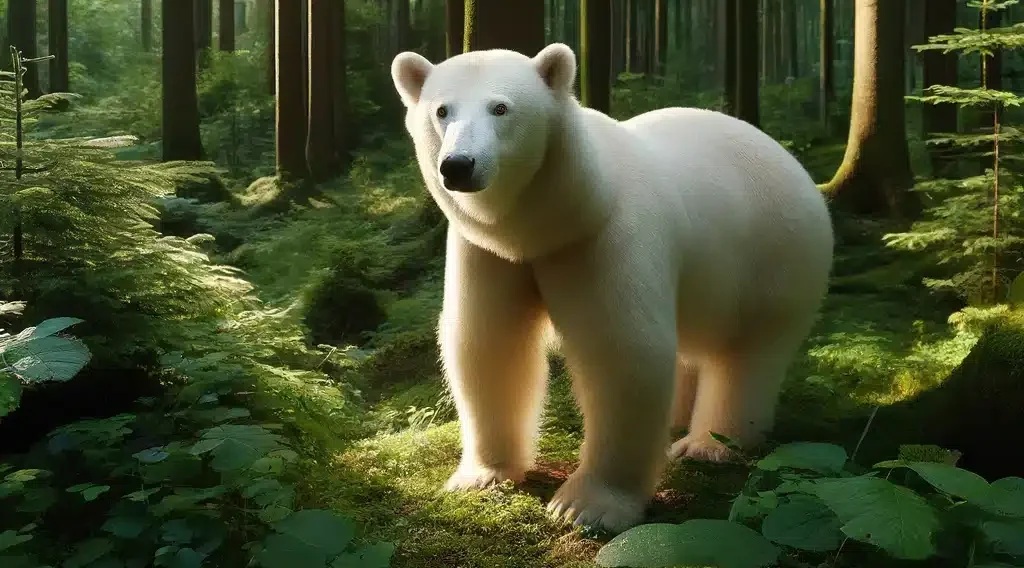
Physical characteristics and specialized adaptations for survival
Let us delve into the physical wonderland that makes polar bears extraordinary – perfectly adapted to thrive in an unforgiving Arctic world.
Their large bodies are wrapped in thick layers of fat, acting as natural insulation against bone-chilling temperatures that would send lesser creatures into hibernation or oblivion. Their paws are more than just mere appendages; they are built for conquest upon nature’s frosty terrain.
Equipped with non-retractable claws, these powerful limbs provide traction on slippery surfaces like ice and snow, allowing polar bears to move with unmatched agility and grace amidst treacherous conditions. But let us not forget their most distinctive feature – that lustrous coat!
Those shimmering white hairs serve two essential purposes: camouflage and thermal regulation. Blending seamlessly with the Arctic backdrop, polar bears become ghostly apparitions, stealthily stalking their prey.
Meanwhile, beneath that snowy exterior lies a dense layer of black skin, acting as a solar panel to absorb the scarce warmth of the sun’s feeble rays. Through these remarkable adaptations, polar bears have become true masters of survival in their frozen realm.
So, my dear readers, before we dive deeper into whether polar bears hunt humans – let us first grasp the awe-inspiring nature of these wondrous creatures. Only then can we truly appreciate the intricate dance between predator and prey that unfolds upon nature’s icy stage.
Polar Bears as Predators
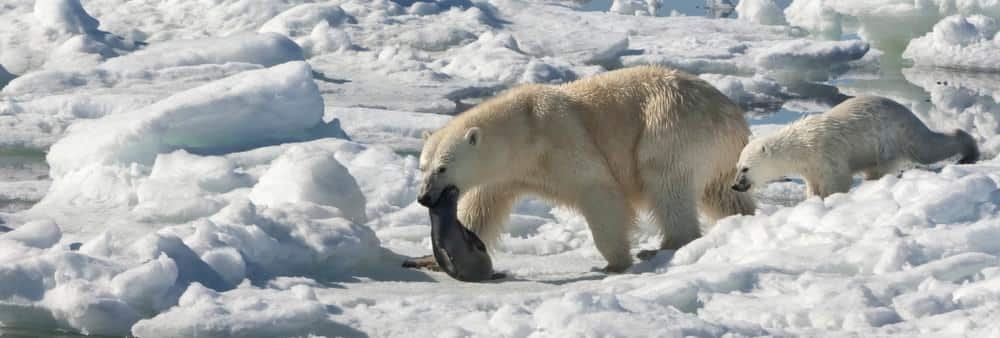
Natural Prey Preferences and Hunting Techniques
Polar bears, magnificent creatures of the Arctic, are apex predators with a well-defined hunting repertoire. While they are known for their seemingly insatiable appetite for seals, it is important to understand the natural prey preferences and hunting techniques that have evolved over millennia in these awe-inspiring animals.
Seals, particularly ringed seals and bearded seals, constitute the primary source of sustenance for polar bears. These blubbery marine mammals provide the essential fat content for survival in the frigid Arctic environment.
Seals: The Primary Source of Sustenance
The hunting strategies employed by polar bears to secure their main source of sustenance are nothing short of extraordinary. One such strategy involves stalking their prey on sea ice platforms.
With a remarkable combination of patience and stealth, polar bears patiently wait near breathing holes on the ice surface where seals surface to breathe.
These surprise encounters are crucial in this hunting technique as it allows polar bears to capitalize on the seal’s vulnerability during these brief moments out of water. Furthermore, polar bears have also been observed employing ambush tactics near breathing holes.
By lying silently beside these openings with only their nostrils exposed above the ice, they deceive unsuspecting seals into believing no danger lurks nearby. Once a seal ventures close enough, the polar bear lunges forward with lightning speed and executes a swift kill using its powerful jaws and razor-sharp claws.
Additionally, while seals form their primary food source, polar bears exhibit opportunistic behavior when other potential prey options present themselves in their icy domain. These alternatives may include scavenging carcasses washed ashore or preying on small land mammals like Arctic foxes or reindeer that stray onto sea ice.
Understanding polar bears as predators enlightens us about their preferred prey choices and the incredible hunting techniques they employ. This knowledge is crucial for dispelling misconceptions about their interactions with humans and sheds light on the inherent balance of nature in the Arctic ecosystem.
Human Encounters with Polar Bears
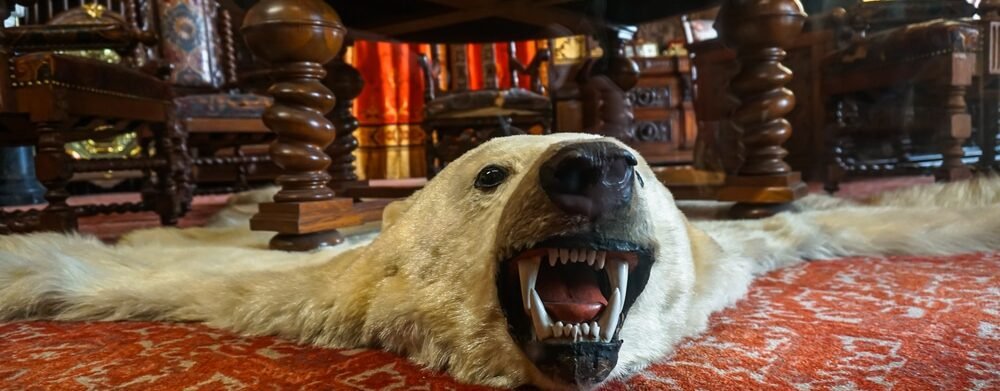
When understanding the relationship between humans and polar bears, we must turn to the wisdom of the Inuit, who have lived harmoniously alongside these majestic creatures for centuries.
The Inuit possess a deep-rooted traditional knowledge based on respect and coexistence with wildlife, including polar bears. Their understanding of the Arctic ecosystem and its delicate balance is unparalleled. In some regions, such as Norway, bear spray is currently illegal, and this lack of accessibility may lead to a higher reliance on lethal methods like firearms.
Inuit communities have long recognized that polar bears are not malicious predators seeking out humans as their next meal. Instead, they acknowledge that these magnificent beasts are driven by their innate instincts for survival. The involvement of male bears in predatory incidents is more common, while female bears often exhibit different behavior patterns in such situations.
Through generations of observation and experience, the Inuit have learned how to navigate the Arctic landscape while minimizing conflicts with polar bears. They understand that maintaining a respectful distance, avoiding sudden movements, and properly storing food sources are essential in preventing dangerous encounters. Historically, polar bear hunting has significantly impacted polar bear populations, with bans implemented by different countries to protect these animals.
Cultural respect for wildlife in Arctic communities
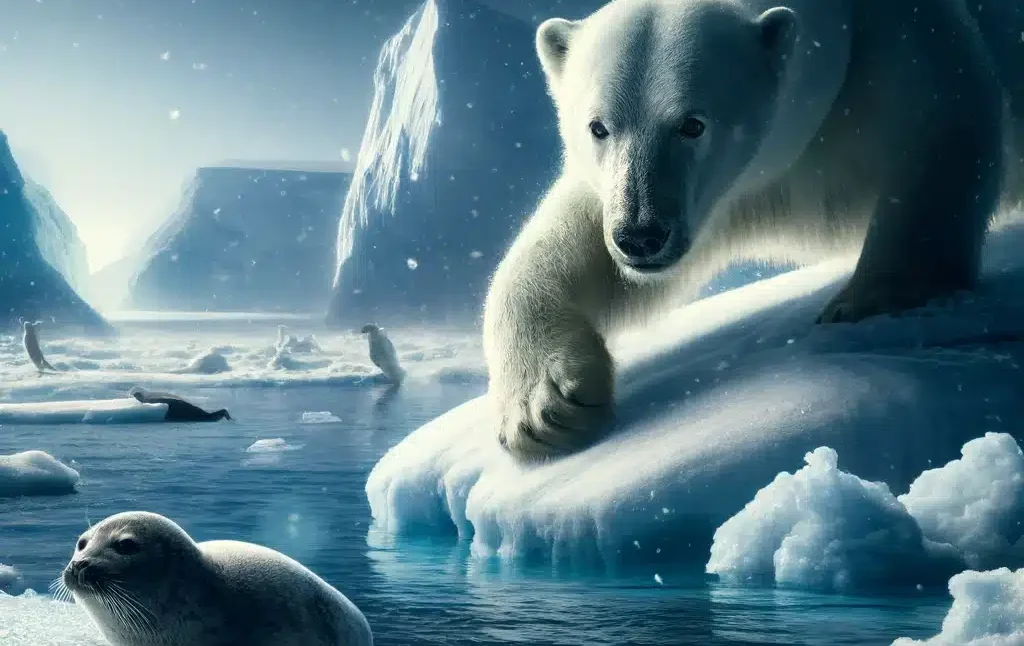
Unlike some outsiders who view wildlife as merely commodities or threats to be eliminated, Arctic communities hold a deep cultural respect for all creatures inhabiting their harsh yet awe-inspiring environment.
For them, polar bears symbolize strength and resilience and are integral to nature’s intricate tapestry. This reverence goes beyond mere survival; it is ingrained in every aspect of their daily lives.
In Arctic communities like those inhabited by the Inuit, hunting practices are deeply rooted in sustainability and ethical principles. They recognize that taking only what is necessary from nature ensures its long-term preservation.
This ethos extends to encounters with polar bears as well. Arctic communities prioritize peaceful coexistence rather than seeking confrontations or exploiting opportunities for sensationalized stories or trophy hunts like some misguided individuals do.
Historical accounts are replete with examples of mutual respect between humans and polar bears throughout centuries of shared existence in the Arctic region. Stories of polar bears ambling through Inuit camps without posing any threat or even assisting in hunting activities are not uncommon.
These accounts highlight that polar bears do not harbor innate aggression towards humans but instead respond to their surroundings and individuals’ actions. We must learn from the Inuit’s cultural respect for wildlife and harmonious cohabitation with these magnificent creatures.
By adopting a mindset rooted in understanding, we can dispel misconceptions and work towards promoting a peaceful coexistence between humans and polar bears.
It is time to challenge the sensationalized narratives that paint these incredible animals as ruthless hunters stalking human prey, for such narratives only perpetuate fear and hinder efforts toward conservation.
Rare Instances of Polar Bear Attacks on Humans

Rare as they may be, polar bear attacks on humans are not entirely unheard of. Compared to fatal black bear attacks, which also occur but are less frequent, polar bear attacks can be more severe due to the bear’s size and predatory nature.
To comprehend why these interactions occur, it is crucial to consider the underlying factors contributing to such aggression. One significant factor is the scarcity of natural food sources for polar bears due to climate change.
As global temperatures rise, Arctic sea ice melts alarmingly, reducing the bears’ hunting grounds and access to their primary prey: seals. With diminished hunting opportunities, polar bears may become desperate in their search for sustenance and more likely to wander toward human settlements.
Another contributing factor is human encroachment on polar bear territories. As human activity expands into previously untouched areas, it inevitably intersects with the habitats of these magnificent creatures, impacting polar bear populations.
The accelerated development of oil and gas exploration and tourism in the Arctic has increased encounters between humans and polar bears. These interactions can lead to conflicts when humans unintentionally invade bear territories or disturb them during critical periods such as mating or denning seasons.
Examining Cases of Attacks on Humans by Bears
By examining documented incidents worldwide, we gain insights into the geographical distribution and frequency of bear attacks on humans. The Wildlife Society Bulletin recently published a comprehensive report on polar bear attacks, categorizing and analyzing incidents since 1870.
The report offers insights into the causes of the attacks, the implications of sea ice loss, and recommendations for proactive measures to safeguard both bears and people.
While such occurrences are relatively rare overall, they tend to be more prevalent in areas with higher concentrations of human activity in polar bear habitats. Coastal regions that experience ice melt earlier or have reduced sea ice coverage are particularly susceptible due to increased interactions between humans and bears.
Several factors contribute significantly to increased human-polar bear conflicts beyond geographical considerations alone. Changes in traditional food availability resulting from climate change alter polar bear behavior patterns.
Diminished access to seals leads some bears to explore alternative food sources, including scavenging in human settlements. Furthermore, inadequate waste management practices and improper food storage attract polar bears to human-inhabited areas, inadvertently creating the potential for dangerous encounters.

Conclusion
While polar bear attacks on humans are rare, it is important to understand the underlying factors contributing to such incidents.
The scarcity of natural food sources due to climate change and human encroachment on polar bear territories are key elements that can lead to increased conflicts. By examining documented incidents worldwide and dispelling misconceptions perpetuated by media sensationalism, we can better understand how polar bears interact with humans.

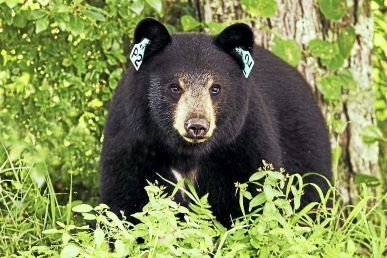
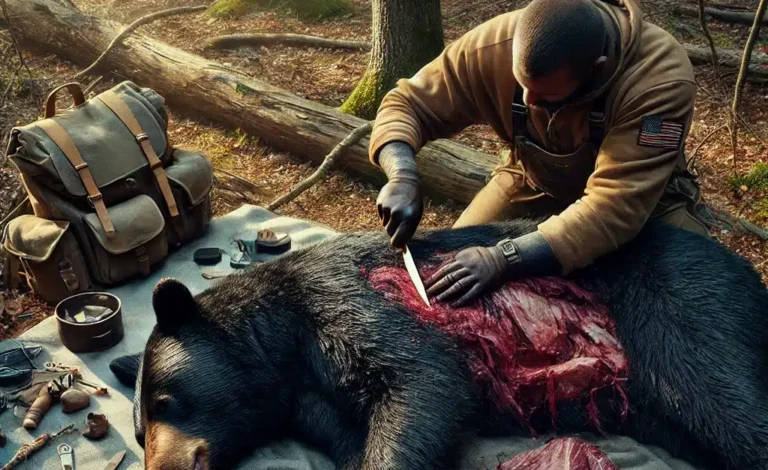
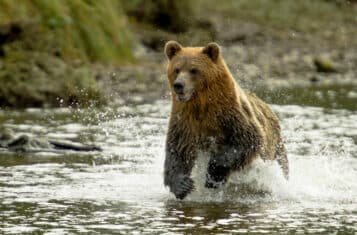


Thanks for sharing. I read many of your blog posts, cool, your blog is very good.